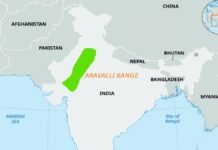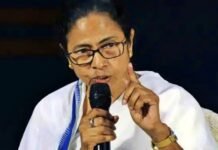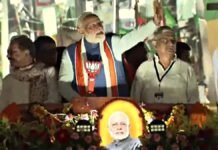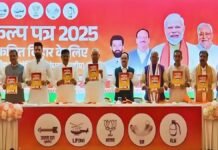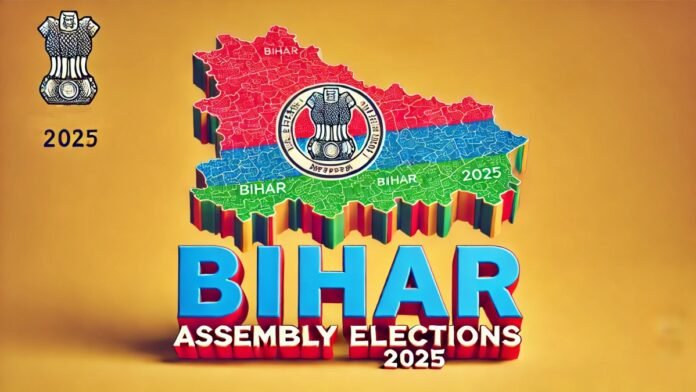
Key Points
- Campaign concludes at 6 PM today for 122 constituencies across 20 districts
- 1,302 candidates including 136 women vie for voter approval on November 11
- PM Modi, CM Nitish Kumar, and Tejashwi Yadav led final campaign push
- 45,399 polling booths ready with special arrangements for women and disabled voters
- Hisua constituency leads with 367,667 voters while Makhdumpur has lowest at 247,574
Patna: As the clock ticks toward the 6 PM deadline on Sunday, political parties are making their final push to sway voters in the second phase of the Bihar Assembly elections. The campaigning period has been marked by high-octane rallies and strategic outreach, with top leaders crisscrossing the state throughout the weekend.
On Saturday, Prime Minister Narendra Modi addressed multiple rallies, emphasizing the NDA‘s development agenda and governance model. Chief Minister Nitish Kumar, seeking to consolidate JD(U)’s position, highlighted his administration’s welfare schemes and infrastructure initiatives. Meanwhile, RJD leader Tejashwi Prasad Yadav, serving as the Bihar convener of the India Alliance, focused on youth employment and social justice issues. LJP (Ram Vilas) chief Chirag Paswan also held rallies appealing to voters in constituencies where his party has fielded candidates.
Electoral Demographics and Constituency Breakdown
The 122 assembly constituencies going to the polls include 101 general category seats, 19 reserved for Scheduled Castes, and 2 for Scheduled Tribes. The electoral landscape spans 20 districts, representing a diverse cross-section of Bihar’s socio-political fabric.
A total of 37,013,556 registered voters will exercise their franchise, comprising 19,544,041 male voters, 17,468,572 female voters, and 943 third-gender voters. This phase features an average of 815 voters per polling booth, ensuring manageable crowd control and efficient voting processes.
Makhdumpur constituency has the smallest electorate with 247,574 voters, while Hisua boasts the largest voter base at 367,667. Notably, all 122 constituencies exceed the two lakh voter mark, indicating substantial electoral weight across the board.
Candidate Demographics Show Gradual Progress
Among the 1,302 candidates in the fray, 1,165 are men, 136 are women, and one identifies as third-gender. While women’s representation remains at approximately 10% of total candidates, this reflects ongoing efforts toward greater political inclusivity. The presence of a third-gender candidate marks continued progress in recognizing diverse gender identities in electoral politics.
Hotly Contested Seats and Strategic Battles
Three constituencies are witnessing the most crowded contests with 22 candidates each: Chainpur in Kaimur district, Sasaram in Rohtas district, and Gaya City. These seats typically indicate multi-cornered fights involving regional parties, independents, and smaller outfits challenging established political forces.
Conversely, six constituencies have just five candidates each, suggesting clearer bipolar or tripolar contests. These include Lauriya and Chanpatia in West Champaran, Raxaul and Sugauli in East Champaran, Triveniganj in Supaul, and Banmankhi in Purnia. The limited number of candidates in these seats often indicates stronger party discipline and strategic candidate selection.
Comprehensive Polling Infrastructure Ready
The Election Commission has established 45,399 polling booths across the 20 districts, including 5,326 in urban areas and 40,073 in rural regions. Of these, 45,388 are general booths while 11 serve as auxiliary polling stations to accommodate voters in remote areas.
To ensure inclusive and transparent voting, special arrangements include:
- 595 booths staffed entirely by women personnel
- 91 booths managed by persons with disabilities
- 316 model polling stations showcasing the best electoral practices
- Webcasting facilities at all polling booths for real-time monitoring
These measures aim to enhance voter confidence, ensure accessibility, and maintain electoral integrity throughout the voting process.
What’s at Stake
The second phase is crucial for all major alliances as they seek to establish momentum heading into subsequent phases. The NDA, comprising BJP, JD(U), and smaller allies, is defending its governance record. The India Alliance, led by RJD and Congress, is attempting to consolidate anti-incumbency sentiment and opposition votes. Regional players like Chirag Paswan’s LJP faction are working to carve out their political space.
With voting scheduled for November 11, results from this phase will provide significant indicators about voter mood and the potential trajectory of the overall election outcome in Bihar.














